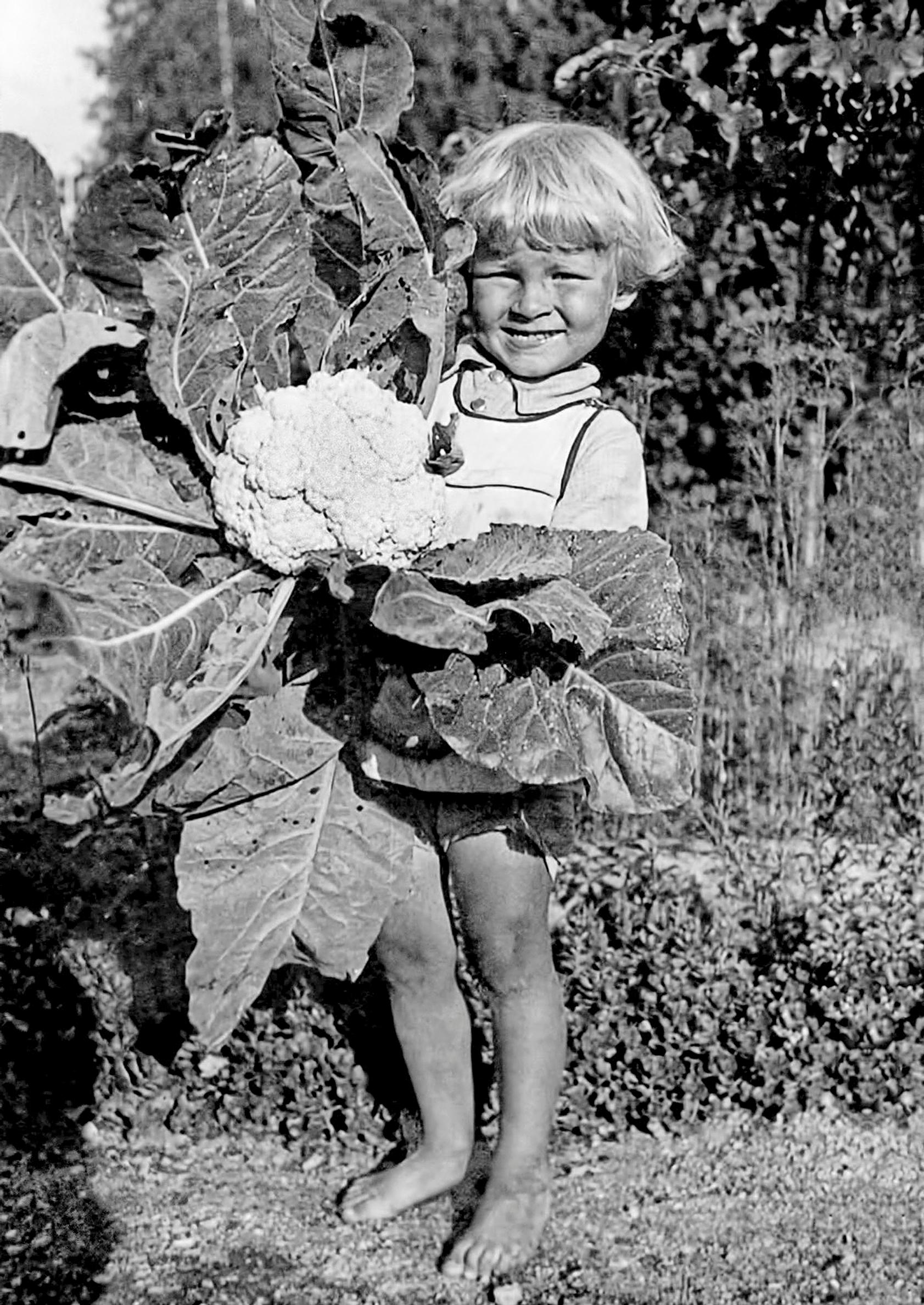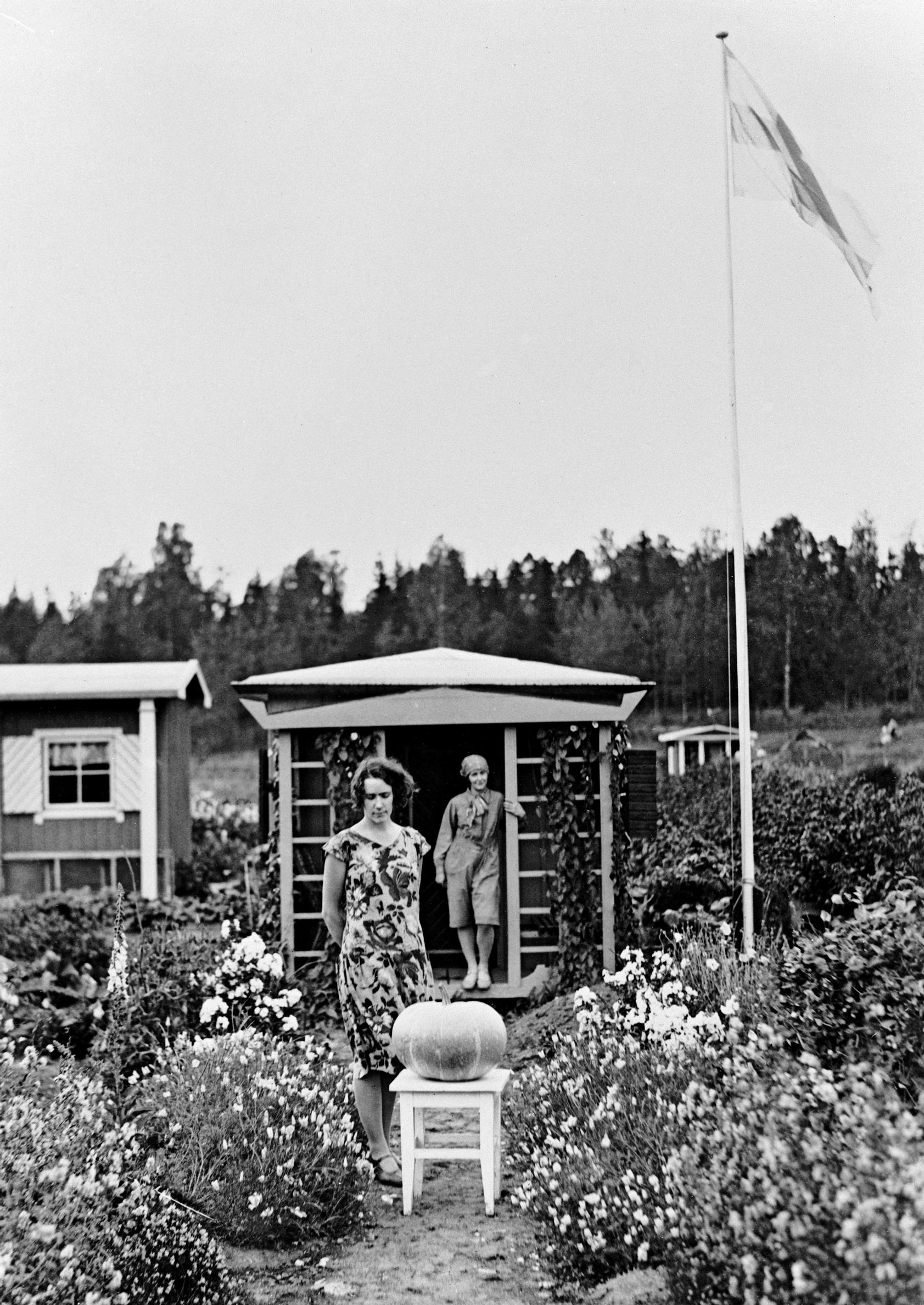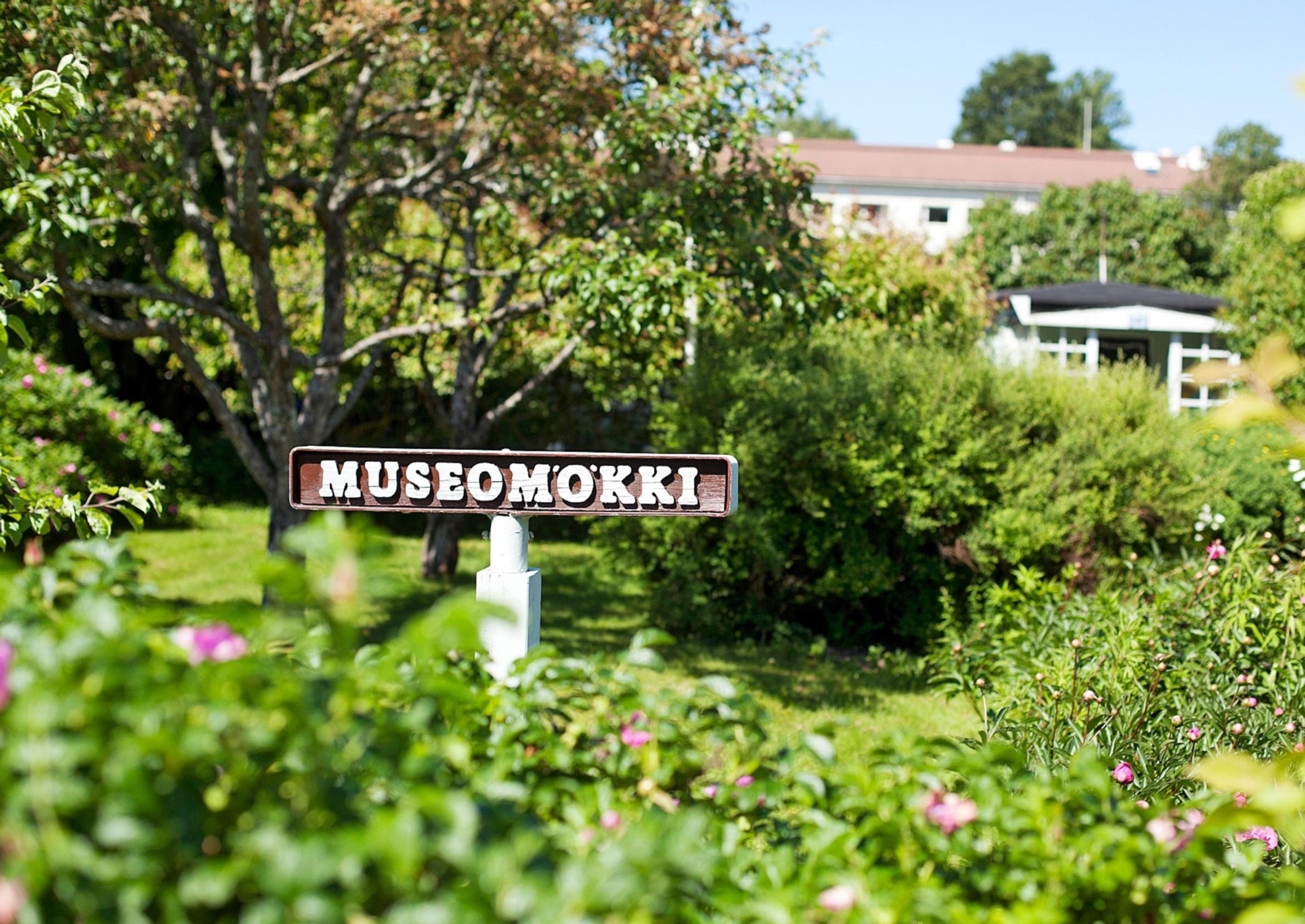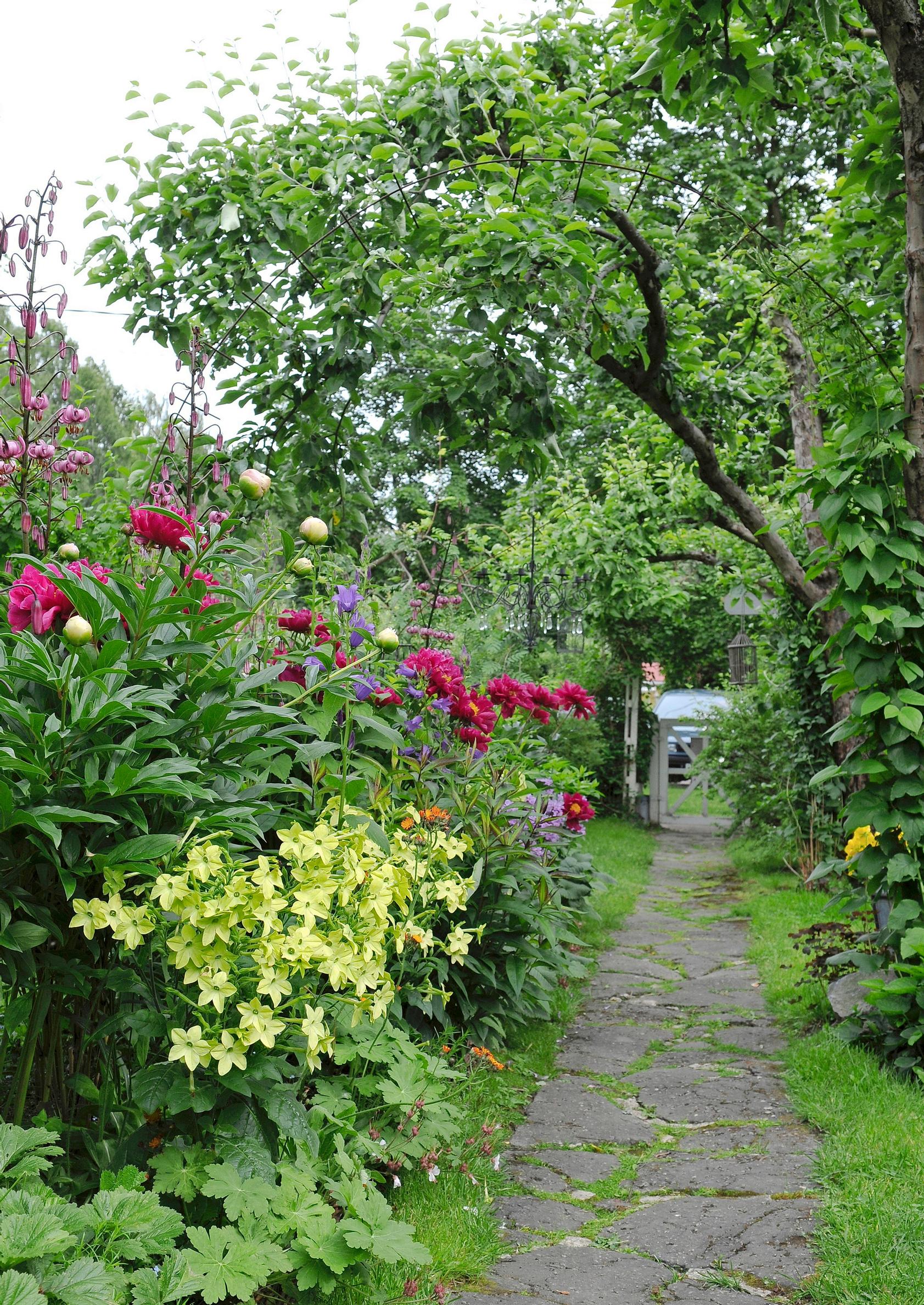
Allotment gardens were a weapon against tuberculosis and strained nerves in Finland—discover their fascinating history!
Even today, many Finns dream of having their own charming allotment garden with a tiny cottage. But what do they have to do with poor relief and public health? Read on and learn more about the history of these urban paradises.
A stone path leads from the gate to a tiny house across a lot bordered by a hedge. Primroses, globeflowers, peonies, daisies, lilies, and phlox line the path in turn. A climbing rose and Virginia creeper scale the side of the house. On the veranda, forget-me-nots, violets, geraniums, and many more sparkle in their pots.
For many city dwellers, a cottage in an allotment garden is a miniature paradise, with lilacs standing at the edge of a grassy yard and herb beds and berry bushes yielding a fragrant harvest.
Finland’s largest allotment garden is located in the Pakila district of Helsinki, boasting 320 plots. Smaller allotment gardens—about ten—can be found around the capital region and dozens more near cities nationwide.
So there are plots, but there are also plenty of people eager to become allotment gardeners. For quite a few, having their own plot remains an unfulfilled dream.

Originally, the allotment garden movement wasn’t so much green as it was pink at heart.
As early as the 18th century in England, city dwellers were given plots of land to grow additional food. A law on poor people’s garden and cultivation plots was enacted in 1819. From the British Isles, this idea spread across Northern Europe, to Denmark and Germany, and eventually to Finland via Sweden.
The father of the allotment garden movement is often cited as the German physician Daniel G. M. Schreber (1808–1861), who was dedicated to youth education and public health. However, Schreber was mainly interested in providing young people with fresh air and meaningful activities rather than focusing on gardening itself.
After the doctor’s death, Schreber Gardens—flower gardens for children—were created, followed by the first allotment garden with cultivation plots and cottages. It was established in Schreber’s hometown of Leipzig in 1869.

The Helsinki City Council first discussed founding an allotment garden in 1902.
Around the turn of the century, the allotment garden movement became one of many initiatives aimed at improving the situation of those with limited means.
The transition from an agrarian, class-based society to an industrial one brought uncertainty and social challenges. In response, revival movements, the labor movement, the women’s movement, and the temperance movement all emerged. Allotment gardens set out to address the yearning for land among people who had left rural areas for the city.
They wanted to offer “a summer home close to the city, a small plot of land that a worker can call their own and shape according to their own preference and taste as a kitchen garden or flower garden,” as one of the key proponents of the allotment garden movement, commercial gardener and gardening school principal Ossian Lundén (1866–1937) wrote. He viewed allotment gardens as weapons against two of the era’s most dangerous afflictions: tuberculosis and strained nerves.
Another pioneer of the movement was the teacher E. J. Reinilä (1879–1951), who wanted urban laborers to experience the happiness of “attaching themselves to the land with every root of their being.” This, he believed, would also reduce rebellious impulses in uneasy times.
In 1930, Reinilä became chair of the Finnish Allotment Garden Association, and he was among those who founded the magazine Siirtolapuutarha, which is still published today.

The oldest allotment garden still operating on its original site was established in 1918 in the Ruskeasuo area of Helsinki.
Finland’s oldest continually operating allotment garden, however, began a couple of years earlier in Tampere. In 1977, it was moved away from the expanding city to the neighborhood Niihama, where it is now called the Niihama allotment garden.
Today, the Niihama area is also home to the Tampere allotment garden museum, featuring original cottages and artifacts from the Hatanpää era. These items shed light on how people relaxed in days gone by:
Emmi and Tarmo Harju spent their free hours listening to shellac records on their His Master’s Voice record player.
Mrs. Emma Haapamäki started cycling to the Hatanpää garden in 1925 on her Ooppeli-brand bicycle manufactured by the Tampere-based company Outinen & Lehmusvirta.
During harvest season, when the allotment garden was guarded day and night, the guard walked around the area with a Detect-brand security clock acquired in the 1940s, inserting keys placed throughout the garden into the clock.

In Helsinki, the wellbeing of allotment gardens was advanced, in particular, by landscape and garden designer Elisabeth Koch (1891–1982). She served as the city’s gardening advisor from the 1920s to the 1950s, shaping the aesthetic we have today regarding urban greenery.
Besides designing allotment gardens, Koch was involved in the plantings in the wooden Käpylä district (Puu-Käpylä), on Torkkelinmäki hill in Kallio, and in the courtyard of the workers’ housing block in Vallila. Her ideology emphasized practicality and, most of all, natural charm in gardens. They should delight in every season, ensured by selecting plants so that their blooms follow one another in an unbroken succession—trees, shrubs, and perennials alike.
Elisabeth Koch’s guidebooks are still read today. Nowadays, when allotment garden plots are no longer used for “poor relief,” her teachings feel more valuable than ever. While one of Ossian Lundén’s feared threats, tuberculosis, has been defeated, another—overtaxed nerves—continues to trouble us. Koch proposes beauty as the remedy:
“Not all people are equally blessed with the gift of appreciating the aesthetic value of plants and taking pleasure in their beauty, but I believe that this gift has been granted to every allotment gardener.”
Sources used included the work Kysykää Essiltä! Elisabeth Kochin puutarhat by Maria Karisto, Taina Koivunen, and Antti Karisto (Maahenki 2015) as well as the website of Kumpulan siirtolapuutarhayhdistys ry.


